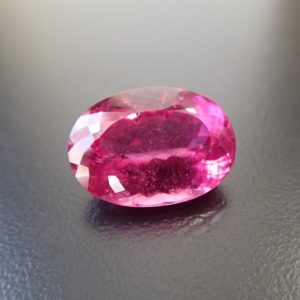Tourmaline
Our Tourmaline Collection
Treatment / Enhancement
Occasionally, tourmalines contain surface-breaking fissures that are filled with resins. Dark blue, blue-green, and green tourmalines are sometimes heated to lighten their color. Red tourmalines, also known as rubellites and pink varieties can be heated or irradiated to improve their colors.
Origin
Tourmalines are found all over the world. The largest deposits are in Brazil, but they have also been discovered in Maine, California, Afghanistan, Nigeria, Kenya, Mozambique and other regions. There are almost as many localities to unearth tourmalines as there are colors for these gemstones – yellow, brown, black, pink, blue, green, red and colorless.
Folklore
For centuries tourmalines have been a highly sought after jewel for royalty. The formidable Empress Dowager Tz’u Hsi, the last empress of China who died in 1908, valued their rich pink colors above all other gemstones. It is quite common to see fine ancient jadeite strung with pink tourmaline beads. The people of ancient Ceylon called tourmaline “turmali,” the word for “more colors.”


Care
Tourmalines are quite hard at 7 to 7.5. Any that are not resin filled may be carefully cleaned with the ultrasonic or steam cleaners. Since heat may change their color, tourmalines should not be subjected to extreme temperatures.
